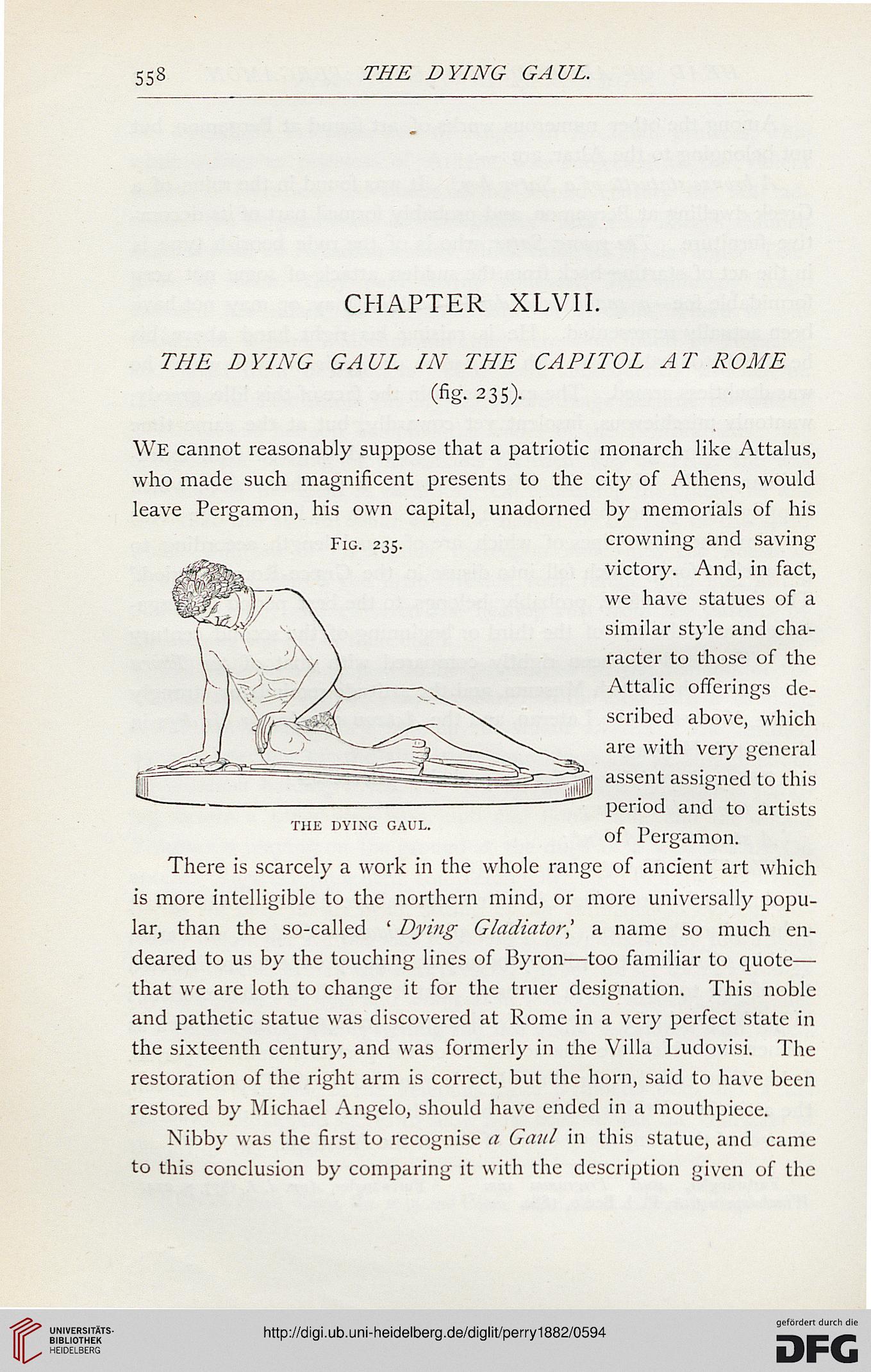558
THE DYING GAUL.
CHAPTER XLVII.
THE DYING GAUL IN THE CAPITOL AT ROME
We cannot reasonably suppose that a patriotic monarch like Attalus,
who made such magnificent presents to the city of Athens, would
leave Pergamon, his own capital, unadorned by memorials of his
There is scarcely a work in the whole range of ancient art which
is more intelligible to the northern mind, or more universally popu-
lar, than the so-called ' Dying Gladiator', a name so much en-
deared to us by the touching lines of Byron—too familiar to quote—
that we are loth to change it for the truer designation. This noble
and pathetic statue was discovered at Rome in a very perfect state in
the sixteenth century, and was formerly in the Villa Ludovisi. The
restoration of the right arm is correct, but the horn, said to have been
restored by Michael Angelo, should have ended in a mouthpiece.
Nibby was the first to recognise a Gaul in this statue, and came
to this conclusion by comparing it with the description given of the
(%• 235)-
THE DYING GAUL.
crowning and saving
victory. And, in fact,
we have statues of a
similar style and cha-
racter to those of the
Attalic offerings de-
scribed above, which
are with very general
assent assigned to this
period and to artists
of Pergamon.
THE DYING GAUL.
CHAPTER XLVII.
THE DYING GAUL IN THE CAPITOL AT ROME
We cannot reasonably suppose that a patriotic monarch like Attalus,
who made such magnificent presents to the city of Athens, would
leave Pergamon, his own capital, unadorned by memorials of his
There is scarcely a work in the whole range of ancient art which
is more intelligible to the northern mind, or more universally popu-
lar, than the so-called ' Dying Gladiator', a name so much en-
deared to us by the touching lines of Byron—too familiar to quote—
that we are loth to change it for the truer designation. This noble
and pathetic statue was discovered at Rome in a very perfect state in
the sixteenth century, and was formerly in the Villa Ludovisi. The
restoration of the right arm is correct, but the horn, said to have been
restored by Michael Angelo, should have ended in a mouthpiece.
Nibby was the first to recognise a Gaul in this statue, and came
to this conclusion by comparing it with the description given of the
(%• 235)-
THE DYING GAUL.
crowning and saving
victory. And, in fact,
we have statues of a
similar style and cha-
racter to those of the
Attalic offerings de-
scribed above, which
are with very general
assent assigned to this
period and to artists
of Pergamon.




